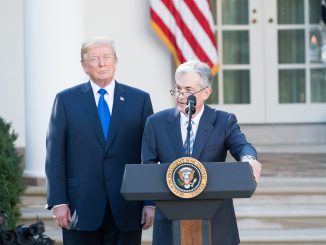On September 13th I argued that with QE3 the Fed took two important “baby steps” toward a sound monetary regime. Their promise to keep policy expansionary well into the recovery was an incremental move toward level targeting. And their switch from a fixed QE to an open-ended policy was a tiny step toward “targeting the forecast.” But very tiny. An actual targeting the forecast policy would call for the Fed to do enough QE to raise NGDP growth expectations up to the desired level. Of course that’s easier said than done. The Fed certainly isn’t going to adopt the NGDP futures market approach any time soon (although such a market will almost certainly be an important part of policy in the second half of the 21st century.) And given the problem of “multiple equilibria,” it’s very hard for the Fed economists to come up with a reasonable estimate of the amount of QE that would be likely to get the job done right now.
I’m going to propose a compromise between the current policy of $40 billion bond purchases each month, and a radical policy of immediately targeting the forecast. Have the Fed start QE3 at $40 billion per month, and then increase their purchases at a rate of 20% each month, until they have achieved their policy goal (of equating predicted nominal growth with desired nominal growth.)
Obviously 20% looks like a number plucked out of thin air. That begs the question of why not 0% or 100%? The problem with zero percent increases is that they may be too small. Even three years of QE3 will add less than $1.5 trillion to the Fed balance sheet. And in the absence of other initiatives like level targeting, no one has any idea whether that would be enough to achieve their objectives in a reasonable time frame.
So why not increase the monthly purchases by 100% per month? As that king learned in the old story of the chessboard, 100% growth rates rapidly lead to extremely large quantities. And the Fed would be starting out with $40 billion, not a single grain of wheat. The Fed is still attached to the “wait and see” approach, where they do some easing and then look at the result in terms of various market and output indicators. So they want to see a few months worth of data before making radical adjustments.
And this is the beauty of the 20% monthly increase proposal. At first the QE builds rather slowly: $40 billion, $48 billion, $57.6 billion . . . .
But before too long the amounts would become quite large. The Fed would no longer have to worry that even three years of QE might not be enough. Believe me, it would be plenty large. I haven’t even worked out the numbers, but I think purchases would increase more than 8-fold each year. Fortunately, as David Beckworth recently showed, the Fed has barely made a dent in the T-securities market. And of course all those MBSs issued by the GSEs are also de facto Treasury securities.
Better yet, the “shock and awe” of this proposal would allow the Fed to quickly achieve Svensson’s “target the forecast” equilibrium.
I don’t actually expect the Fed to adopt this 20% growth rate proposal. It’s too radical. But for God’s sake make it higher than 0%! Does anyone seriously believe that if the Fed is struggling to find a way to provide enough demand stimulus; that 0% is superior to a 1% or 2% monthly increase?
- Bulenox: Get 45% to 91% OFF ... Use Discount Code: UNO
- Risk Our Money Not Yours | Get 50% to 90% OFF ... Use Discount Code: MMBVBKSM
Disclaimer: This page contains affiliate links. If you choose to make a purchase after clicking a link, we may receive a commission at no additional cost to you. Thank you for your support!




Leave a Reply